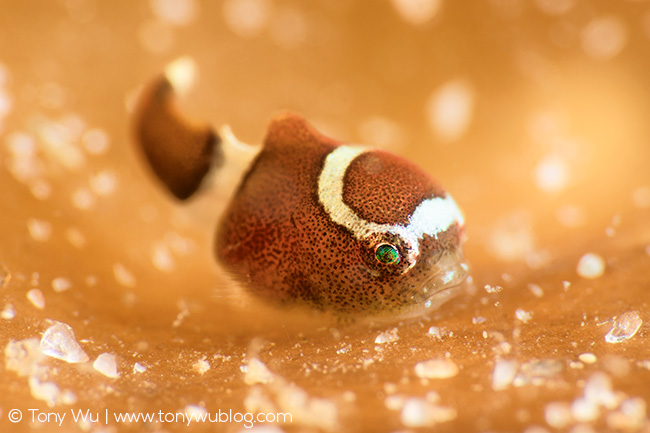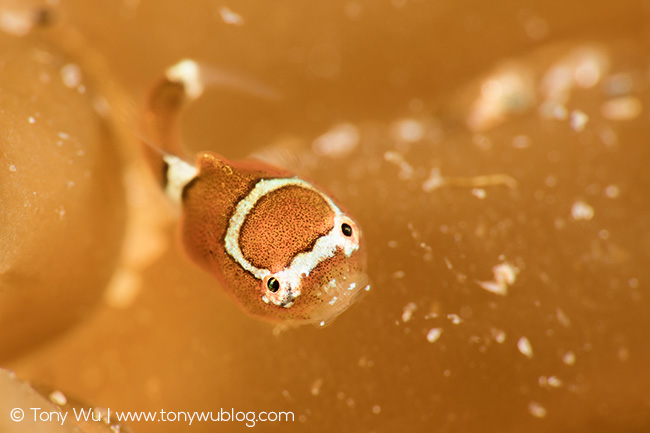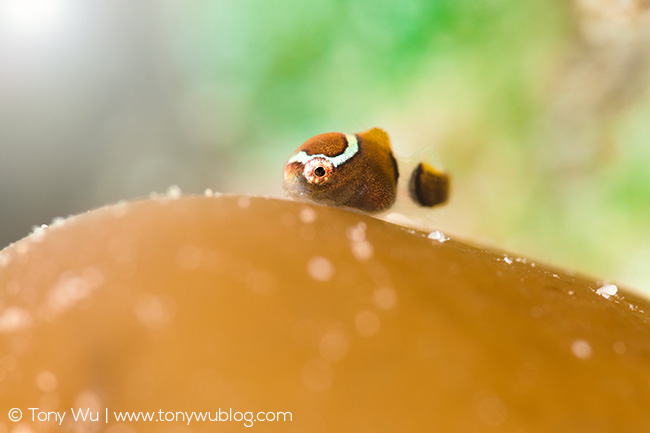I finally had a proper opportunity to put my new Nikon gear through its paces underwater recently. (See blog post from November 2017 about switching over to Nikon.)
Here is a sample photo, taken with a Nikon D850, 105mm macro lens, and a SMC-2 diopter with my Nauticam housing.

It is a juvenile of the recently described Eumicrotremus uenoi, a dwarf lumpsucker (サクラダンゴウオ). Besides being super cute, juvenile E. uenoi are tiny. This one was about 3mm from head to the tippy tip of its caudal fin.
For a sense of scale, you see those white things in the photo? They’re grains of sand.
This being the first time that I’ve had an opportunity to leer at a little lumpsucker, I thought about playing it safe. Photographing the fish at normal 1:1 magnification and then enlarging the resulting image would’ve been the normal and sane thing to do. With the D850’s 45.7MP to play with, that wouldn’t have been a problem.
Being the glutton for self-flagellation that I am though, I decided to go all-in and try the SMC-2, which features 4x life-size magnification. It was my first time using the high-magnification diopter. As in, I had no experience with it (or with the species, or with the diving gear, or with the camera set-up, or with the location, or with the environment for that matter).
I was hoping to find a lethargic little lumpsucker that would smile, pose, and make life easy for me.
Fat chance.
As I soon learned, juvenile E. uenoi like to move. And when they're not moving, they tend to sit on things that shift with current and sway with swell.
At 4x life-size, just finding the subject in the viewfinder is challenging. Doing so repeatedly because the fish scampers off once it realises you’re looking at it through a viewfinder…kinda’ sucks to be honest.
It took a few minutes to figure out how to work with the diopter. Basically, you have to develop a feel for where the subject is likely to be and learn to aim your camera without actually being able to see the subject until it comes into focus. The range of focus is extremely narrow, so you need to have steady hands and solid control over your movements. With some patience, I was able to get the hang of it and take a few photos with proper focus and depth of field.

In case you’re wondering, the colouration and characteristic white ring around the top of the head disappear as the juveniles mature, so the window of opportunity to (squint really hard and attempt to) see these newborn fish is short, on the order of a few weeks.
The adults tend to be a drab olive-green or maroon-red and are generally deep-water residents. The holotype was collected at 100m depth and measured 14.2mm, an absolute giant!
I’ve never come across one of the adults, mainly because I’ve never gone looking for them. But I’ve really wanted to see the juveniles for a while, because they’re so darn cute. Watching one through the viewfinder at 4x life-size was pretty cool. Until of course, it inevitably swam off and I had to groan and look for it again.
One important lesson I learned from this experience is that whales are much easier to see in the viewfinder.
